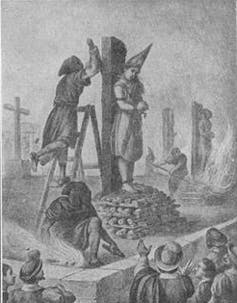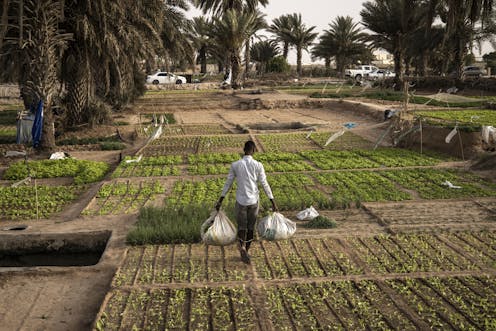Source: The Conversation – France in French (2) – By Trevor Mazzucchelli, Associate Professor of Clinical Psychology, Curtin University

Shutterstock
Il est normal que les enfants s’ennuient. En fait, l’ennui peut même les aider à développer un certain nombre de compétences importantes.
À l’approche des vacances, les parents entendront sans doute leur enfant leur dire cette phrase classique : « Je m’ennuie… »
Nous nous ennuyons tous de temps en temps, et il n’y a rien de mal à cela. En fait, s’ennuyer est même utile, car cela nous aide à réfléchir et à modifier ce que nous faisons ou à prêter plus d’attention à notre environnement extérieur.
Cependant, de nombreux enfants doivent encore apprendre à gérer l’ennui. Si vous vous demandez comment réagir lorsque les enfants se plaignent de s’ennuyer (sans les laisser regarder davantage la télévision), voici quelques idées à tester.

Shutterstock
L’ennui aide les enfants à apprendre
L’ennui est légèrement désagréable, mais il n’y a pas de mal à ce que les enfants s’ennuient. En fait, l’ennui permet aux enfants de développer un certain nombre de compétences importantes, notamment :
-
supporter des expériences désagréables,
-
gérer la frustration et réguler les émotions,
-
développer son imaginaire,
-
résoudre des problèmes, planifier et organiser,
-
acquérir de l’indépendance et de l’autonomie.
Ces compétences sont essentielles pour que les enfants développent un sentiment de contrôle sur leur propre bonheur et leur bien-être.
Du lundi au vendredi + le dimanche, recevez gratuitement les analyses et décryptages de nos experts pour un autre regard sur l’actualité. Abonnez-vous dès aujourd’hui !
Pourquoi les enfants se plaignent-ils de l’ennui
En général, la vie des enfants est structurée et organisée pour eux. Lorsqu’ils disposent de temps libre, les enfants peuvent éprouver des difficultés à penser à des choses à faire et à les organiser.
Si, dès qu’un enfant se plaint de s’ennuyer, un adulte vient le divertir, alors cet enfant n’aura peut-être pas la possibilité d’apprendre à s’occuper tout seul et à développer son esprit créatif.
Il arrive que les enfants rejettent toutes les idées qu’on leur propose. Ils savent peut-être d’expérience qu’au bout du compte, cela va conduire à une longue discussion ou à ce qu’on s’engage avec eux dans une activité. Dans les deux cas, l’enfant n’a pas à gérer son propre ennui.
L’astuce consiste donc à aider les enfants à avoir leurs propres idées (plutôt que de leur suggérer quoi faire).

Shutterstock
Comment les parents peuvent-ils aider les enfants à apprendre à gérer l’ennui ?
Les parents peuvent faire beaucoup pour se préparer à l’ennui et pour aider leur enfant à apprendre à gérer son propre ennui.
Voici quelques idées.
-
Discutez avec votre enfant de ce qu’il aime faire, de ses centres d’intérêt et de ses passions. Élaborez avec lui un menu d’activités auquel il pourra se référer lorsqu’il s’ennuie. Les enfants plus jeunes peuvent avoir envie d’illustrer leur menu avec des dessins.
-
Essayez de dresser une liste d’activités que votre enfant peut faire sans votre aide – un mélange de choses nouvelles et d’activités qu’il a déjà bien aimées par le passé. Incluez des activités plus rapides (comme le coloriage ou un pique-nique avec un ours en peluche), ainsi que des projets à plus long terme (comme un grand puzzle, la lecture d’un roman, l’acquisition de compétences sportives). Placez le menu à un endroit où votre enfant pourra s’y référer.
-
Assurez-vous que les jouets, outils ou autre matériel soient disponibles et accessibles pour que votre enfant puisse faire ce qui figure sur sa liste. Les jouets et les activités n’ont pas besoin d’être coûteux pour être amusants.

Shutterstock
-
Préparez votre enfant. Informez-le du programme de la journée et du temps qu’il est censé consacrer aux activités de son menu. Cela le rassurera sur le fait qu’il n’est pas livré à lui-même « pour toujours ». Une série d’images illustrant le programme de la journée peut être utile. Avant une période de temps libre, discutez de deux ou trois règles. Par exemple, « Joue tranquillement jusqu’à ce que papa et maman aient fini et si tu as besoin de nous parler, dis-le », ou bien « Excuse-moi et attends que nous soyons disponibles ».
-
Au début, vous pouvez offrir une récompense (comme une activité spéciale avec vous, son goûter préféré ou du temps d’écran) si votre enfant s’occupe correctement pendant un certain temps. Au fil du temps, éliminez progressivement les récompenses en augmentant le temps dont votre enfant a besoin pour trouver à s’occuper, puis ne les lui offrez que de temps en temps.
-
Si votre enfant vous dit qu’il s’ennuie, redirigez-le vers sa liste. Cette conversation doit être brève et précise.
-
Si nécessaire, aidez votre enfant à démarrer. Certains enfants peuvent avoir besoin d’aide pour démarrer une activité. Il peut être nécessaire de passer quelques minutes à les installer. Essayez de ne pas tout faire vous-même, mais posez plutôt des questions pour les aider à résoudre les problèmes. Vous pouvez demander : « Que vas-tu fabriquer ? De quoi auras-tu besoin pour cela ? Par où vas-tu commencer ? »

Shutterstock
- Lorsque votre enfant se lance dans une activité appropriée, félicitez-le et accordez lui de l’attention. Vous pourriez dire : « Tu as trouvé quelque chose à faire tout seul. Je suis impressionné ! » Arrêtez de temps en temps ce que vous êtes en train de faire pour le féliciter de s’être occupé. Faites-le avant qu’il ne se désintéresse, mais, au fil du temps, essayez d’allonger progressivement le délai avant de faire un commentaire.
S’il est important que les enfants apprennent à gérer l’ennui, ils ont aussi besoin de se sentir valorisés et de savoir que leurs parents veulent passer du temps avec eux. Prenez du temps pour votre enfant et soyez disponible pour lui lorsque vous êtes ensemble.
![]()
Trevor Mazzucchelli est co-auteur de « Stepping Stones Triple P – Positive Parenting Program » et consultant auprès de Triple P International (Australie). Le Parenting and Family Support Centre (Australie) est en partie financé par les ouvrages publiés par le Triple P – Positive Parenting Program, développé et détenu par l’Université du Queensland (UQ). Les redevances sont également distribuées à la Faculté des sciences de la santé et du comportement de l’UQ (Université de Queensland) et aux auteurs des publicatiions de Triple P. Triple P International (TPI) Pty Ltd est une société privée autorisée par UniQuest Pty Ltd, au nom de l’UQ, à publier et à diffuser Triple P dans le monde entier. Il n’est ni actionnaire ni propriétaire de TPI, mais il a reçu et pourrait recevoir à l’avenir des redevances et/ou des honoraires de conseil de la part de TPI. TPI n’a pas participé à la rédaction de cet article.
– ref. « Maman, Papa, je m’ennuie ! » Comment aider votre enfant à gérer son ennui pendant les vacances – https://theconversation.com/maman-papa-je-mennuie-comment-aider-votre-enfant-a-gerer-son-ennui-pendant-les-vacances-260142








